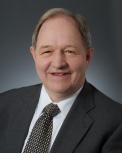Bridging Solutions to the Religion and Science Conflict over Embryonic Stem Cell Research
The religion and science conflict over human embryonic stem cell (hESC) research carries high stakes: should embryos be protected as potential human life or should they be studied as possible cures for debilitating diseases? With the current technology, we cannot simultaneously satisfy both of these objectives—it is necessary to destroy embryos to create totipotent stem cells. Both religion and science provide significant inputs to the bioethical aspects of hESC research methods and practices.
This study uses established tools to analyze the conflict and frame the potential solutions. The starting point, C. P. Snow’s two cultures framework looks at the problem as a lack of cross-discipline literacy, an inadequate description of this conflict. The Jürgen Habermas theory of communicative action is more robust, explains the problem better, and promotes fully communicated solutions derived from Lifeworld and discourse theory. The dual-concern model provides a framework for problem-solving, while a theory derived from this research, the shared-vision model, proposes structured dialogue to develop more enduring solutions.
The data includes structured interviews with clergy, educators, lobbyists, and scientists. Starting with Ian Barbour’s theories of religion and science conflict, I developed pre-positioned assessment criteria (efficacy, inclusiveness, expansiveness, rationality, endurance, continuity, and hopefulness) for analyzing the data. The results include recommendations for fully integrated solutions. As participants recognize their shared visions, problem solving sessions in academic and religious settings could produce widely-accepted solutions, leading to greater respect for both emerging and aging human life.





